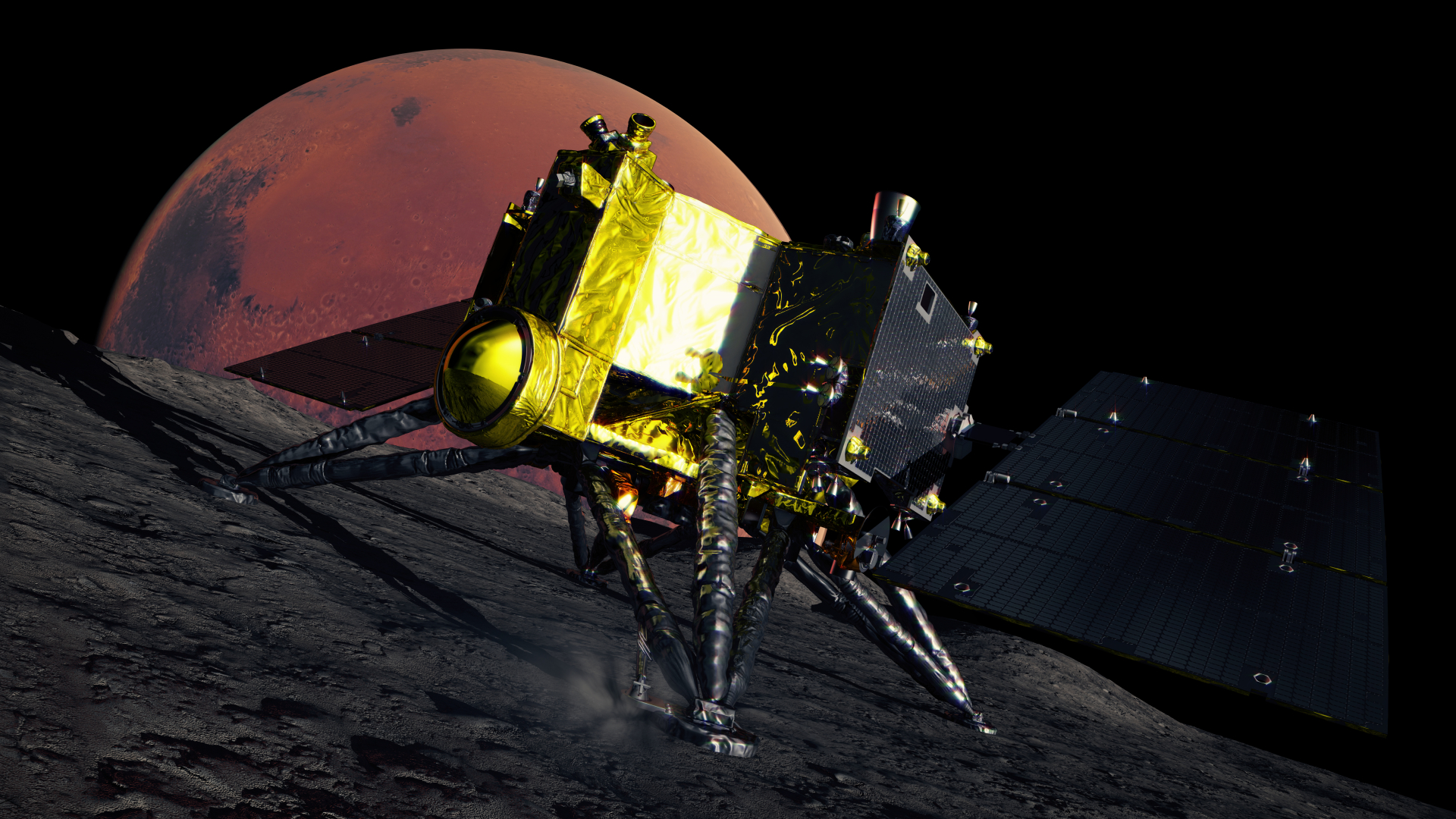Japan delays MMX Mars moon sample-return mission to 2026
Issues with the country's new H3 rocket mean that the ambitious mission can't fly this year.

Japan has postponed the launch of a mission seeking to bring samples of a Martian moon to Earth until 2026.
The Japan Aerospace Exploration Agency (JAXA)'s Martian Moons eXploration (MMX) mission was due to launch in September of this year on the country's new H3 rocket.
However, the first flight of the flagship H3 failed last March. Despite JAXA recently announcing it is now targeting mid-February for a second H3 launch attempt, the agency decided that proving the reliability of the new launcher was paramount before attempting the ambitious interplanetary MMX mission.
Related: New Japanese spacecraft aims to explore the mysterious moons of Mars
A September 2024 launch would have seen MMX reach the Red Planet in August 2025 and return to Earth with around 0.35 oz (10 grams) of samples of the Mars moon Phobos in 2029.
But the mission now must wait until the next Mars launch window opens in late 2026; its samples are slated to reach Earth in 2031. (Earth and Mars align properly for interplanetary missions just once every 26 months.)
The Space Development Strategy Headquarters of the Japan Government has approved the revision for the Schedule for the Basic Plan on Space Policy, and the launch year for the Martian Moons eXploration (MMX) mission has been officially revised from FY2024 to FY2026.December 22, 2023
A key goal of MMX is to determine if Phobos and its fellow moon Deimos are captured asteroids or the coalescence of fragments blown into orbit after a giant impact struck Mars. It also promises to bring new understandings regarding the history of the Red Planet and insights into planetary formation in the wider solar system.
Breaking space news, the latest updates on rocket launches, skywatching events and more!
The MMX mission will include flybys of Deimos, which is smaller and more distantly orbiting than Phobos. The spacecraft will also carry a small rover for exploring Phobos, developed by the German Aerospace Center (DLR) and the French Center National Space Research (CNES).

Andrew is a freelance space journalist with a focus on reporting on China's rapidly growing space sector. He began writing for Space.com in 2019 and writes for SpaceNews, IEEE Spectrum, National Geographic, Sky & Telescope, New Scientist and others. Andrew first caught the space bug when, as a youngster, he saw Voyager images of other worlds in our solar system for the first time. Away from space, Andrew enjoys trail running in the forests of Finland. You can follow him on Twitter @AJ_FI.
